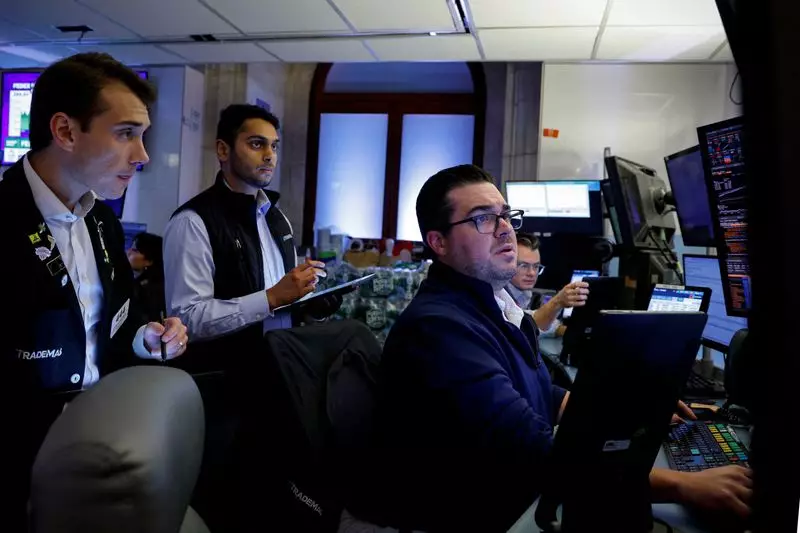U.S. stock index futures faced a downturn on Wednesday as rising geopolitical tensions in the Middle East combined with a domestic port strike created an atmosphere of uncertainty for investors. This dual pressure arrives as Wall Street’s major indices, such as the S&P 500 and Nasdaq, had already begun the final quarter of the year on a negative note, having recently dipped to two-week lows. The decline in risk appetite was largely attributed to heightened fears following Iran’s missile strikes on Israel, which were framed as retaliatory measures. As the situation evolved with further threats of a U.S. and Israeli response, investors were forced to reevaluate their positions in light of these new geopolitical realities.
The ever-changing landscape in the Middle East had immediate repercussions for commodity markets, particularly oil. Pre-market trading indicated that stocks like SLB and Occidental Petroleum enjoyed a boost of approximately 2%, reflecting a broader surge in crude prices, which increased by over 2.5%. The anticipation of potential supply disruptions from a conflict-riddled region is understandably impacting energy stocks. Meanwhile, defense companies such as Lockheed Martin and RTX saw gains of 1.3% and 1.4%, respectively, as the aerospace and defense sector indices experienced record highs. This trend underscores the market’s tendency to gravitate towards sectors viewed as more stable in times of geopolitical uncertainty.
Market participants were also attentive to the CBOE Volatility Index, commonly referred to as Wall Street’s fear gauge, which hovered near three-week highs, suggesting that traders are on high alert amid ongoing instability. With critical economic data on the horizon, particularly the ADP National Employment survey scheduled for release shortly after the market opened, investors were seeking insights into the health of the labor sector. The stakes were raised even higher with the upcoming non-farm payrolls report, a key economic metric that could influence market sentiment and monetary policy decisions.
Despite the recent caution among investors, there has been notable optimism in the wake of the Federal Reserve’s unexpected 50-basis-point interest rate cut aimed at stabilizing employment figures and economic growth. Market expectations have shifted, now projecting a 63.3% likelihood of a smaller quarter-percentage-point rate reduction in November, up from previous expectations a week earlier. This shift highlights a responsive market environment that remains sensitive to Fed policy and macroeconomic signals.
Adding another layer of complexity to market conditions is the ongoing dockworkers’ strike affecting East and Gulf Coast ports, which has now extended into its second day. Analysts have warned that this strike could inflict approximately $5 billion in damages daily to the American economy. Companies like Costco, Walmart, and several others have reportedly prepared for the disruption, yet their stock performances remained relatively stable during premarket hours. Nevertheless, the repercussions from rising oil prices alongside this labor unrest could pose inflationary pressures, particularly relevant given that inflation has been nearing the Federal Reserve’s targeted rate of 2%.
On the corporate front, Nike’s announcement of a withdrawal from its annual revenue forecast amid a change in leadership has further complicated market sentiment. The Dow component’s stock plummeted by 5% in response, illustrating how corporate performance and management changes can directly influence investor confidence. As broader market trends intermesh with individual company news, the result is a nuanced trading environment where investor sentiment can swing swiftly based on developments in various sectors.
The current market landscape is riddled with uncertainty due to geopolitical tensions, economic data releases, and labor unrest. Investors must navigate this complex terrain with an eye toward both immediate events and the broader implications these risks entail for future market stability and economic growth. As the situation continues to unfold, the focus will likely remain on how these dynamics intersect with Federal Reserve actions and overarching economic indicators.

